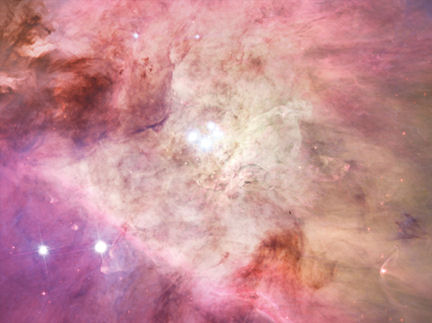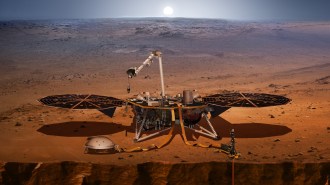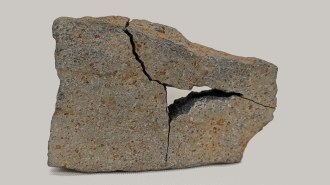Violent Past: Young sun withstood a supernova blast
A big bully pummeled our sun in its infancy, fatefully altering the composition and evolution of the solar system, a new study suggests. The heavy, in this case, was a nearby, massive star. First, the massive star pounded the young sun with fierce winds. Then, the tyrant exploded, blasting the sun with shock waves that suffused it and its embryonic planets with iron.

Evidence for this early, violent episode comes from meteorites—rocky leftovers from the planet-forming process. Martin Bizzarro of the University of Copenhagen and his colleagues set out to determine the amount of iron in the early solar system. To do so, they measured nickel-60, a decay product of iron-60, in eight meteorites known to have formed at different times during the first 3 million years of the solar system.
The meteorites that formed more than about a million years after the start of the solar system contain significantly more nickel-60 than do those that formed earlier, the team found. In a neighborhood of young stars, only a supernova could have produced iron-60, the parent of that nickel.
In contrast, all the meteorites, regardless of age, contain about the same proportion of aluminum. That element doesn’t require a supernova source.
These findings drastically revise a 30-year-old story line for the origin of the solar system, the researchers say in the May 25 Science. In that scenario, a supernova triggered the collapse of the ball of gas and dust that became the sun. But the new data suggest that the sun had already formed about a million years before the supernova explosion.
The sun acquired its aluminum at birth or immediately afterward, Bizzarro says. The fact that all the meteorites had about the same amount of that element suggests that its source was a copious wind expelled by a massive star. The star had to be about 30 times as heavy as the sun, Bizzarro’s team calculates. Within a million years, that behemoth—which would have resided only about a light-year from the newborn sun—went supernova, driving grains of iron-60 into the sun as well as into surrounding material that would eventually form planets.
“This is a convincing argument that you had an injection of iron-60 about 1 to 2 million years after the birth of the sun,” comments Steve Desch of Arizona State University in Tempe. The only source for that iron “that makes any sense whatsoever is a nearby supernova,” he adds.
Massive stars tend to be born in clusters, and the study suggests that the sun and its explosive neighbor were products of a star-making factory that might have yielded thousands of stars some 4.5 billion years ago.
It may seem surprising, Desch says, that a massive star could explode so close to the newborn sun without destroying it. But work by Desch and his Arizona State colleagues Jeff Hester and Nicolas Ouellette, to be reported in the June 20 Astrophysical Journal, indicates that a newborn star could survive a supernova that pops off as close as a third of a light-year away.
Still, theorist Frank Shu of the University of California, San Diego cautions that a nearby, massive supernova might generate a host of additional effects on the young sun.







